Publicado el 10-01-2002
Actualizado el 16-01-2025
Características de la montaña
Rutas publicadas
Primera ascensión
- Otto Pfenniger (CH-CL)
- Sebastián Krückel (DE-CL)
Presentación
El Morado es una de las montañas más emblemática y bella de los Andes centrales de Chile y debe su nombre a los lugareños y arrieros del sector que, haciendo referencia al color que proyecta la roca de la impresionante y temida pared sur, la bautizaron así. Su imagen es sorprendente cuando se le observa desde el sur, especialmente desde la laguna de Morales del Monumento Natural El Morado.
Los primeros intentos serios de ascenso de este cerro datan de 1926 cuando Sebastian Krückel junto a Eschenburg y Fentzahn encontró una ruta posible de ascenso desde el Yeso por la cara norte del cerro. Siete años más tarde, Krückel logró completar esta ruta. Durante ese período se repitieron varios intentos más, la mayoría por la misma cara, actualmente ignorada por los montañistas.
La primera ascensión absoluta la realizaron Sebastian Krückel y Otto Pfenniger, ambos del club DAV, el 22 de diciembre de 1933 por la ruta norte desde el Yeso. Para realizar esta hazaña, se internaron por el valle del río Yeso para luego entrar por el estero Cortaderas hasta la faz noreste del cerro. Ahí, entre acarreos, rocas y canaletas de nieve, llegaron por primera vez hasta la cumbre de esta majestuosa montaña. Varios años más tarde, el 4 de marzo de 1942, Carlos Píderit y Jorge Silva Píderit lograron alcanzar la cumbre por la cara suroeste del cerro. Esta vez, ingresaron por el valle del estero Morado hasta los pies de la pared suroeste, para luego escalar por roca, nieve y hielo hasta la cima. Esta ruta corresponde aproximadamente a la actual ruta Normal a pesar de que sus aperturistas hablaron en un principio de un ascenso por la pared Sur. Más tarde se conocería con este nombre a la pared bajo la cumbre Sur del cerro.
En 1949 la socia del club Lodestar, Nelly Chávez, anotó el primer ascenso femenino al Morado.
En abril de 2007, Fernando Fainberg y Waldo Farías abren un nuevo itinerario a la montaña sin alcanzar la cima. La ruta transcurre por la arista noreste hasta conectar bajo el paso de hielo de la ruta normal. Por su parte, Pedro Binfa y Pablo Miranda abren otra vía por el filo Noreste en abril de 2015 a la que llamaron Filo Contigo.
La cumbre sur del Morado (4490m según IGM) fue ascendida por primera vez en 1934 por Tietzen y Juan Meichsner (DAV), aproximando desde el Sur. Este ascenso fue el segundo absoluto a la cumbre norte y el primero, y posiblemente el único, en que se ha hecho la travesía entre las dos cumbres. Recién el 4 de marzo 1961, la vertical pared sur fue superada por César Vásquez y Juan Tangol, en una de las escaladas más notables de la época.
En octubre del 2010, Nicolás Gutiérrez y Sebastián Rojas realizaron el primer descenso en esquíes desde la cumbre. Durante este descenso, Rojas sufrió una caída que le significó una rotura de ligamento. A pesar de esto, Rojas logró continuar esquiando.
Sobre la cumbre Sur y su mítica pared
La Sur del Morado, es parte de la "trilogía de roca" de los Andes centrales, en la que destacan la sur del cerro Arenas, la norte de la Punta Zanzi, y el Morado. Sin embargo el peso específico de esta ruta hace ver a las otras como unas simples palestras de escalada deportiva. La historia de esta ruta está íntimamente ligada al desaparecido César "Chico" Vásquez, quien la intentó en varias ocasiones, no sin accidentes, logrando finalmente escalarla, junto a Juan Tangol, en el verano de 1961.
Eran los años heroicos de la escalada en Chile, con equipamientos hoy considerados inseguros por decir poco. Se escalaba más con el coraje y el corazón que con técnica y conocimentos. Sin duda, la falta de conciencia de los riesgos y factores de la progresión en pared permitían estos tipos de escalada, pues como se dice, "el que nada sabe, nada teme". Era el estilo de la época, y todos lo aceptaban. La clave estaba en no caer, pues poner a prueba el sistema de cuerdas y anclajes en esa tiempo, era accidente casi por seguro. No eran raras las "fallas totales" de los sistemas, que implicaban que toda la cordada cayera.
En el 2015, los chilenos Andrés Zegers y Aike Parvex, junto al español Oriol Baró, abrieron una variante a la ruta Vásquez por la cascada central de esta pared. La escalada de hielo fue graduada como WI 5 y uno de los largos de hielo incluyó una sección de 10m de hielo delgado, frágil e imposible de proteger. En mayo del 2016 los chilenos Diego Señoret y Nicolás Gutiérrez abren una nueva ruta por la cara Este a la cumbre Sur.
Cronología de las primeras ascensiones a la Pared Sur
- La vía Vásquez. César Vásquez y Juan Tangol. 4/marzo/1961, 1° ascenso.
- Alejandro Izquierdo, Dagoberto Delgado y Germán Maccio,10/enero/1981, 2° ascenso.
- Gino Cassasa y Steve Brewer (US). el 29/marzo/1981 , 3° ascenso. (Antes Cassasa la habia intentado junto a Francisco Medina, llegando sólo hasta el canalón de hielo.)
- Buracchio-Montes-Thiele, 1986, DAV, 4° ascenso.
- Carlos Fuentes y Rodrigo Vivanco. 1994 5° ascenso.
- Waldo Farías y Pablo Besser, Febrero/1995, 6° ascenso. Primera en el día y primera sin clavos.
- Carlos Pinto y Diego Vergara, Febrero/2003, 7º ascenso.
- Felipe González Donoso, 8º ascenso, 1ª en solitario, 29/diciembre/2003.
- Jean Bouichou (FR), Mikel Martiarena (ES) y Virgine Debordeau (FR), enero /2004, 9° ascenso y el primero en el que participa una mujer.
- José Edwards (CL) y David Bruder (DE) en diciembre del 2004 realizan el primer ascenso por el día a la pared. En total requirieron de 15 horas.
- Armando Moraga y Felipe González Díaz en enero del 2005 abren una nueva vía por la vertiente suroeste de la pared (5.8, D, 600m) que se junta con la Tangol-Vásquez en sus últimos largos. Segundo ascenso por el día de la pared.
- Andrés Zegers y Carlos Pinto en enero del 2005 ponen un nuevo récord de velocidad en la pared al ascenderla en 15 horas ida y vuelta desde Baños Morales. Pinto es el primero en repetir la ruta.
Referencias
- Pfenniger, Otto (1937). El Morado – Relato del Primer Ascenso. Revista Andina 1937. Club Alemán Andino (DAV). (Traducción de este artículo)
- Nuevas rutas en el Yeguas Heladas, Gemelo Este y pared sur del Morado. Chileclimbers, 2015.
- Tangol, Juan (1961). Cumbre Sur del Morado. Primera Ascensión por la Pared Sur. Anuario de Montaña 1961. Federación de Andinismo de Chile (pág. 152-160).
- Binfa, Pedro (2016). Cerro Morado, Northeast Ridge, Filo Contigo. American Alpine Journal.
- Chileclimbers (2016). Nueva Ruta en “El Morado” – Cajón del Maipo.
- Kosche, S. (1943). Erstmalige Besteigung des Morado 5060 m über die direkt Südwand. Revista Andina 1943. Club Alemán Andino (pág. 16- 20). (Traducción de este artículo).
- Ascensiones de Temporada. Revista Andina N°64, 1949. CACH (pág. 5).
- Fica, Rodrigo (2024). El Ajo de Molibdeno. Editorial Chilena de Montaña (pág. 76, 125, 130, 131 y 398).

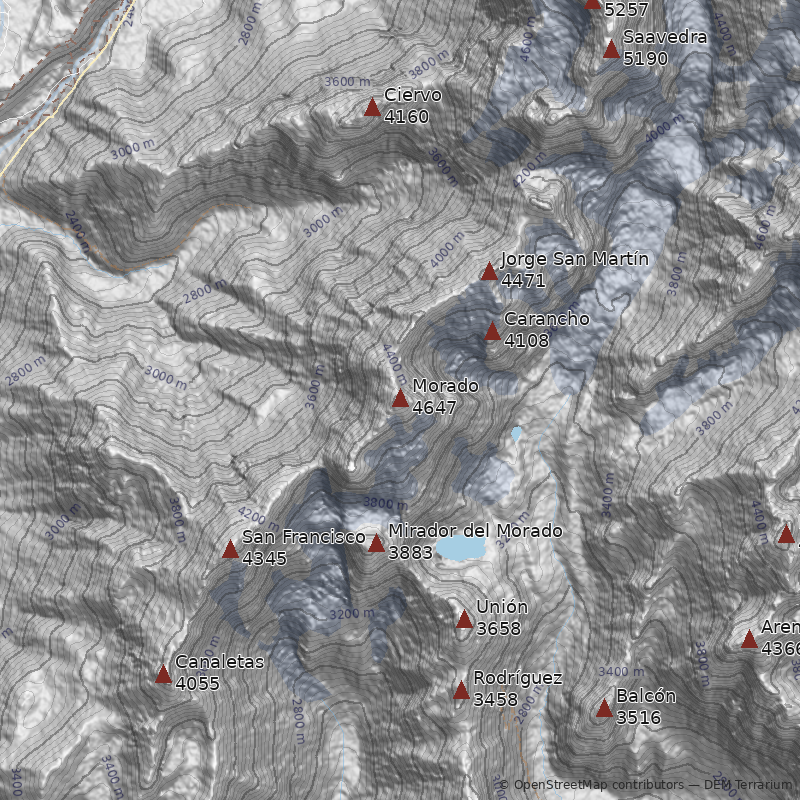
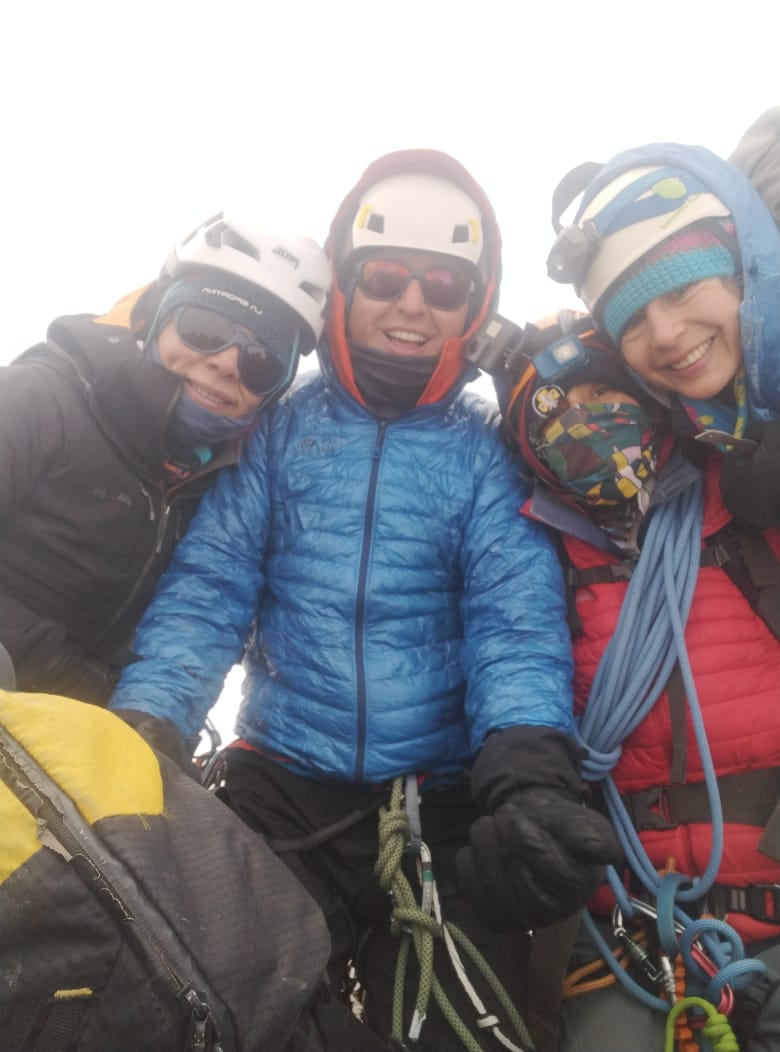
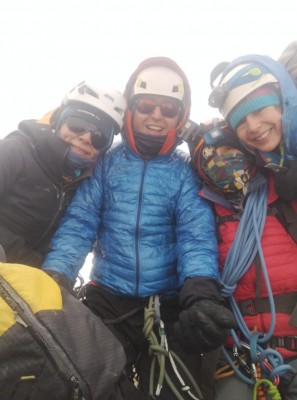
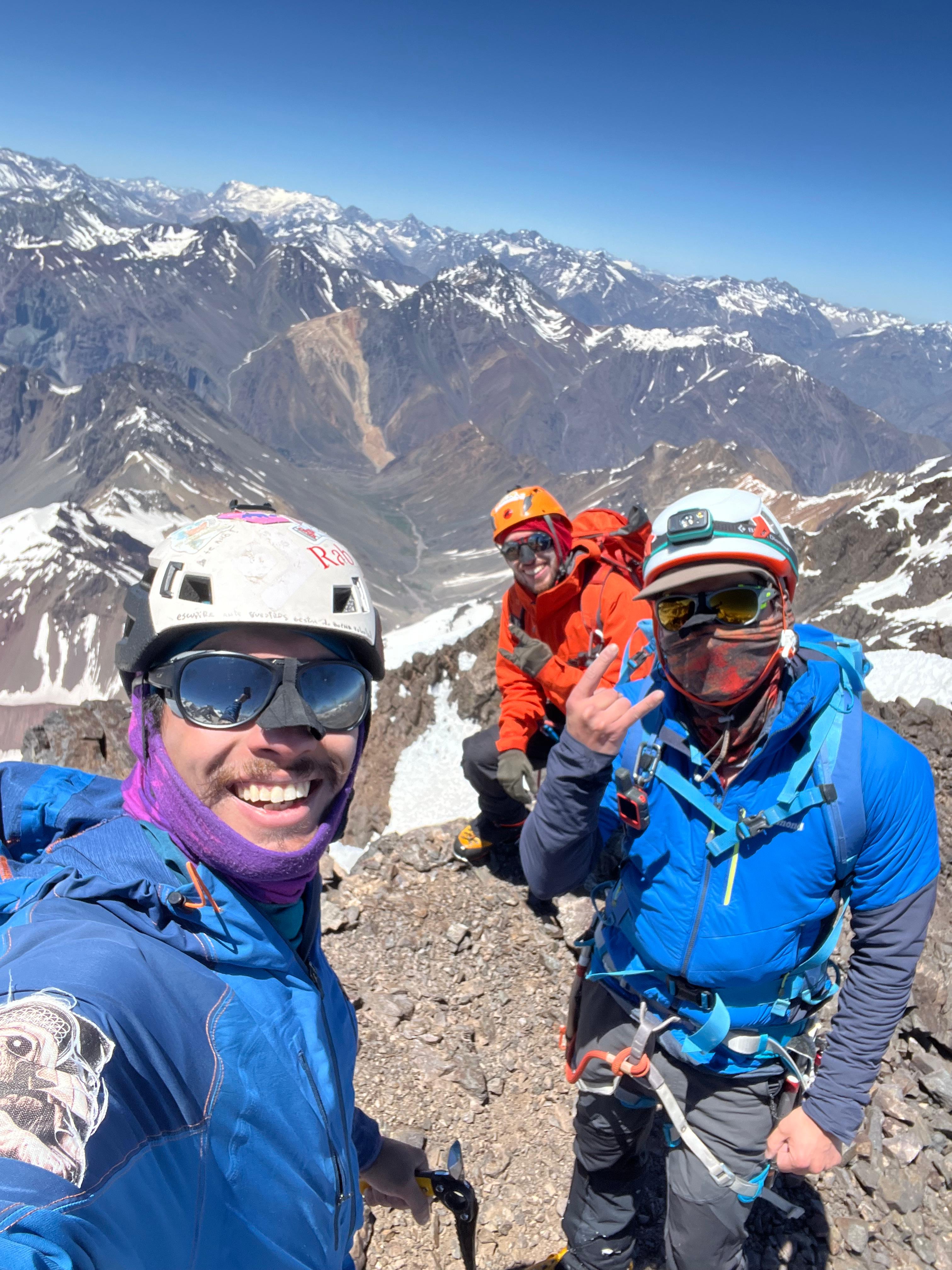
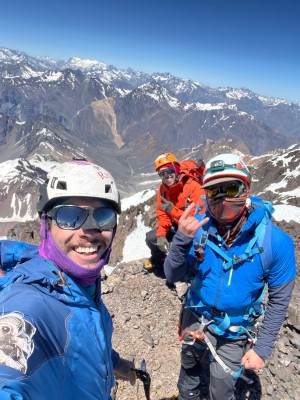
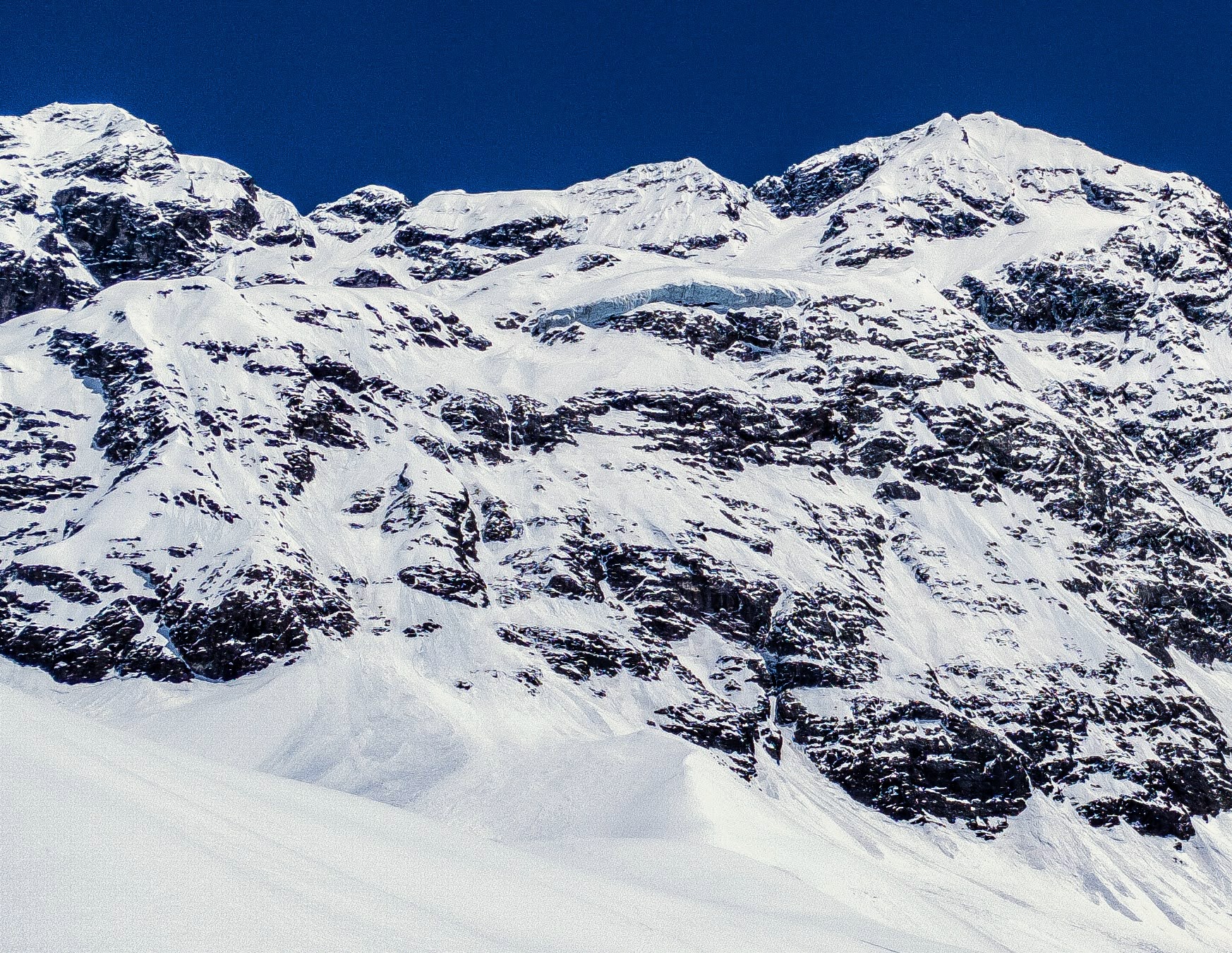

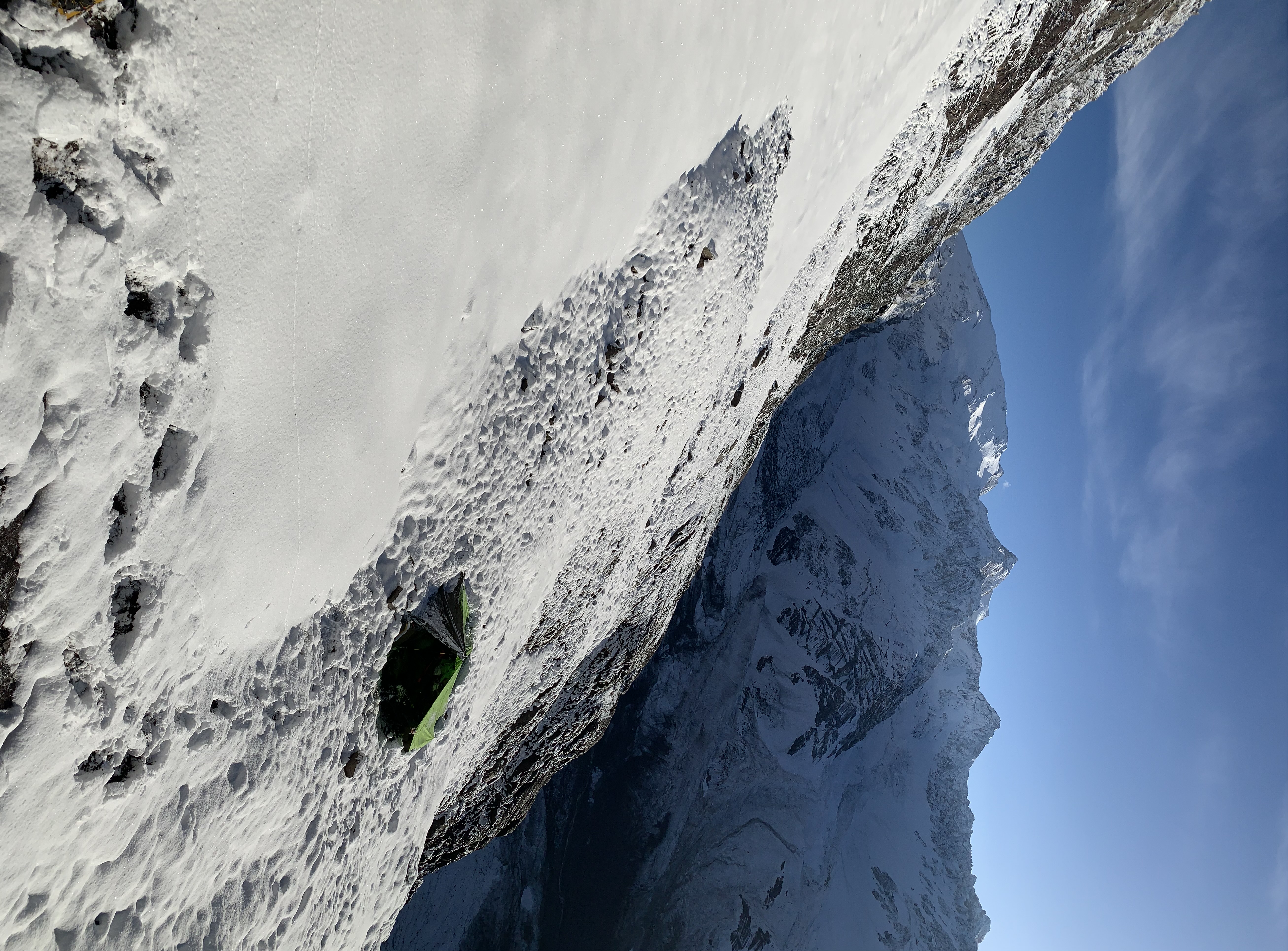

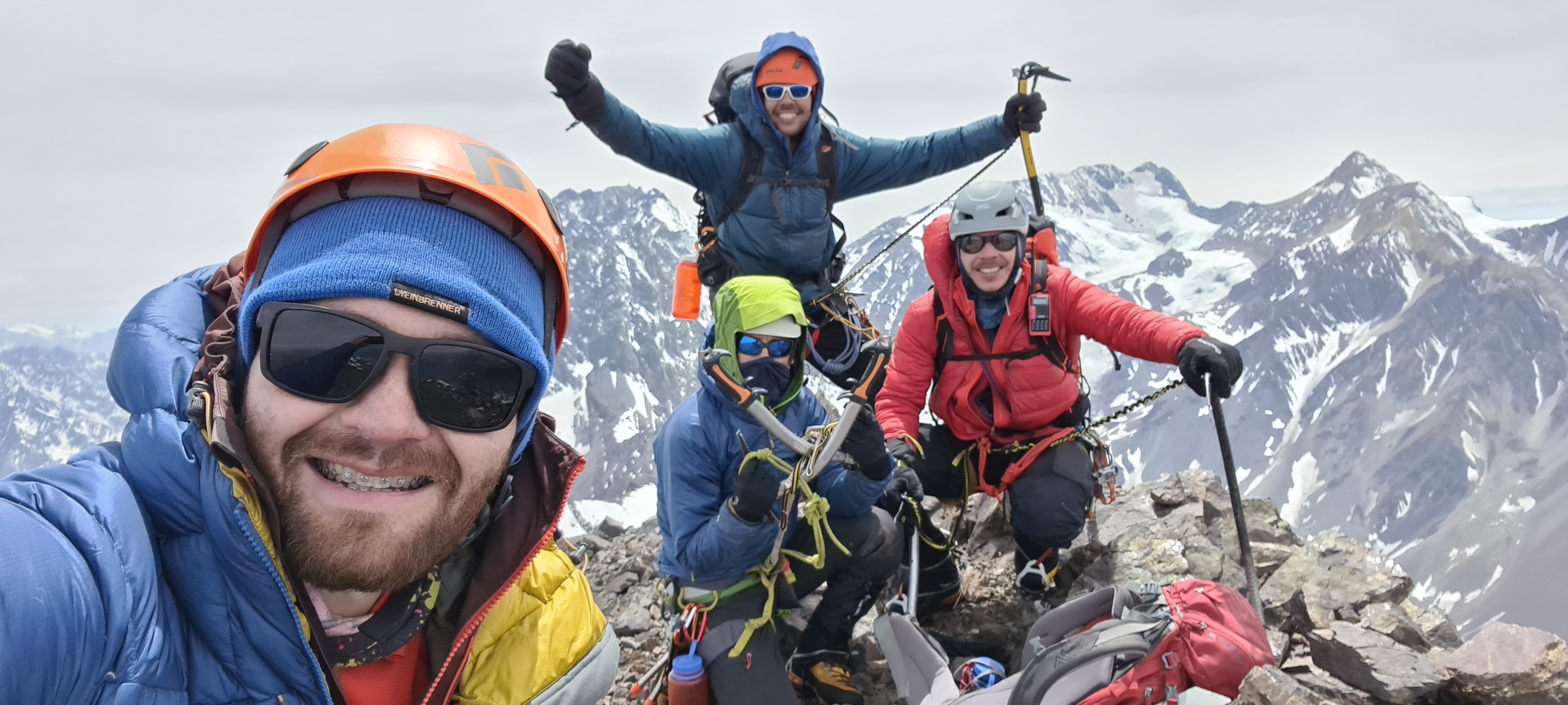
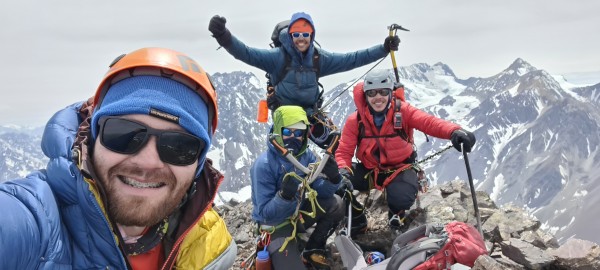
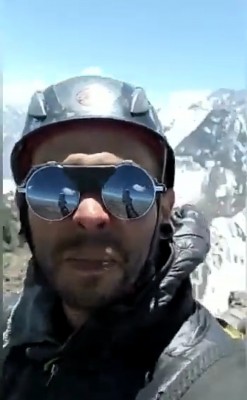
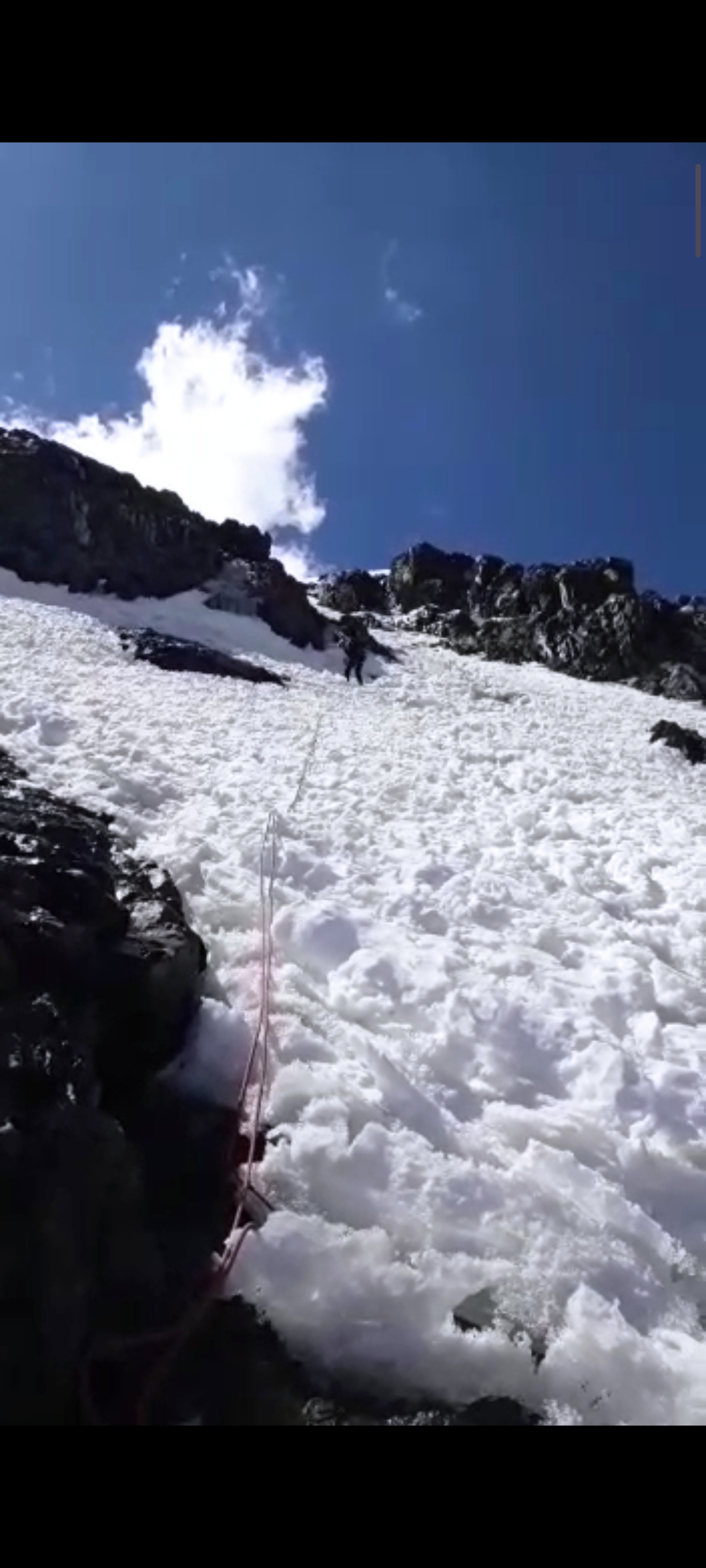
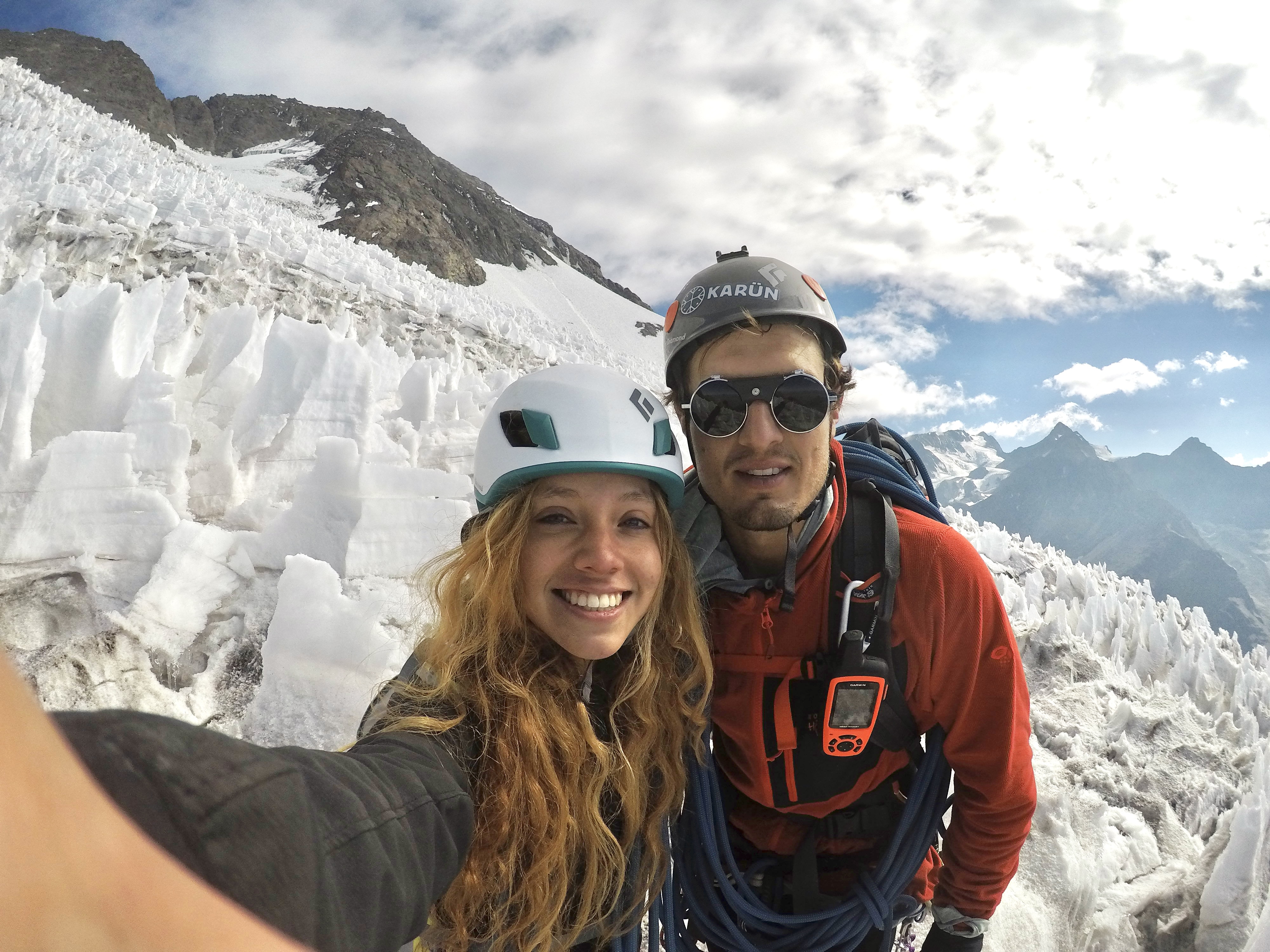
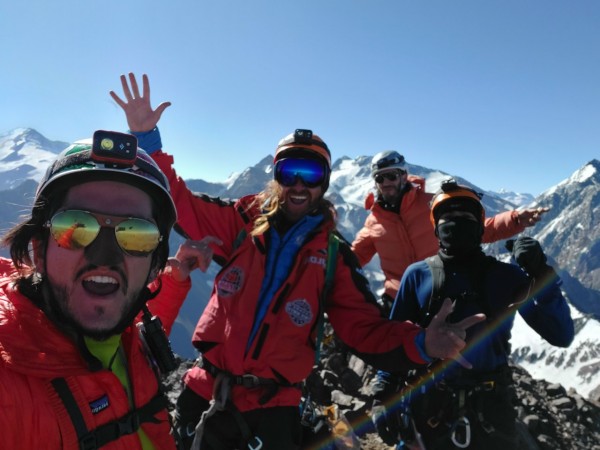
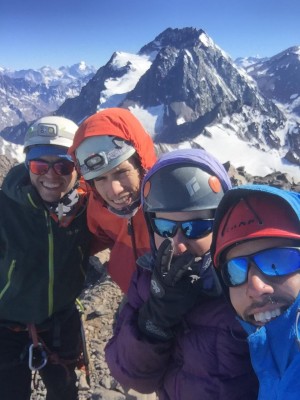
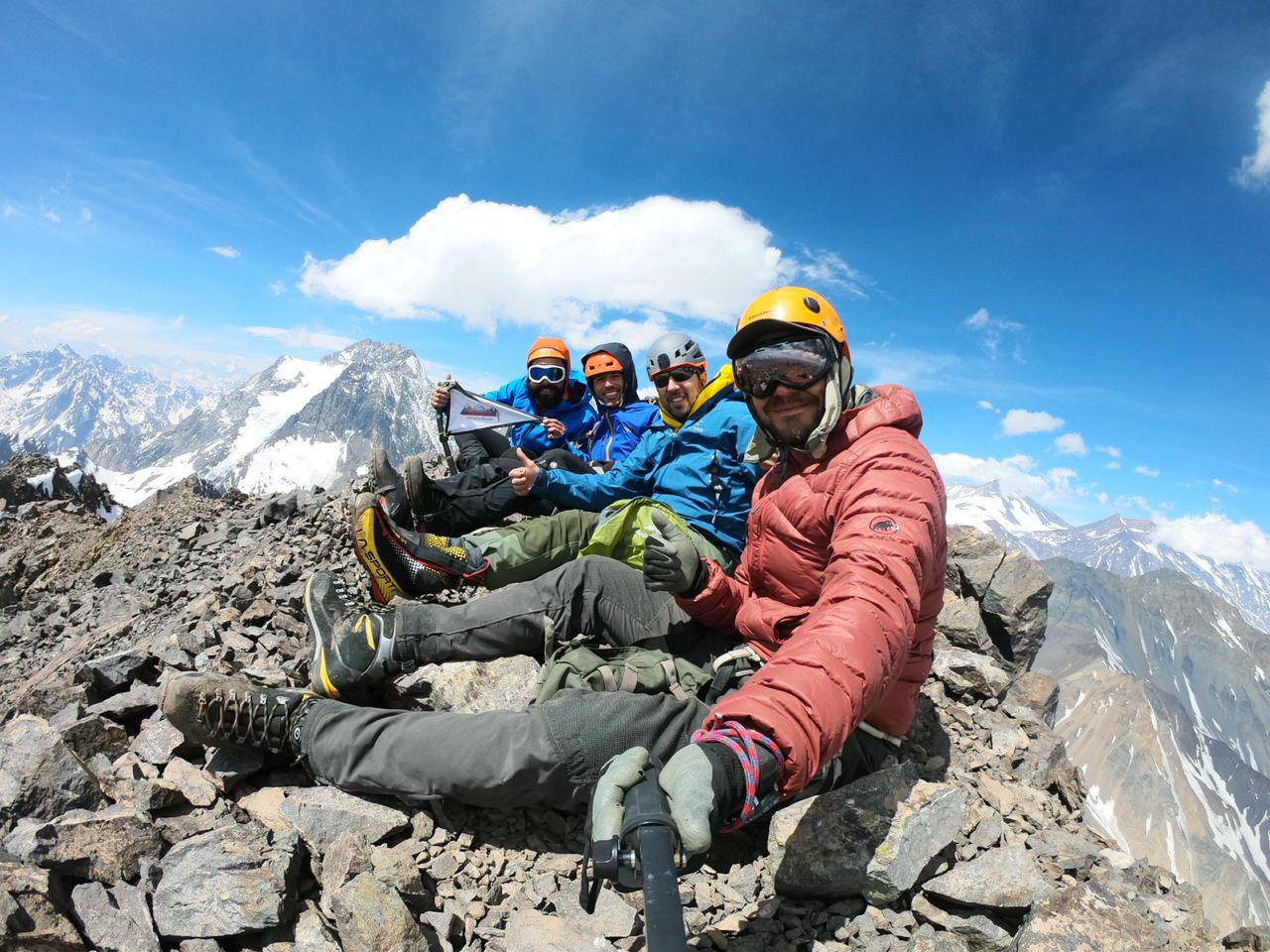
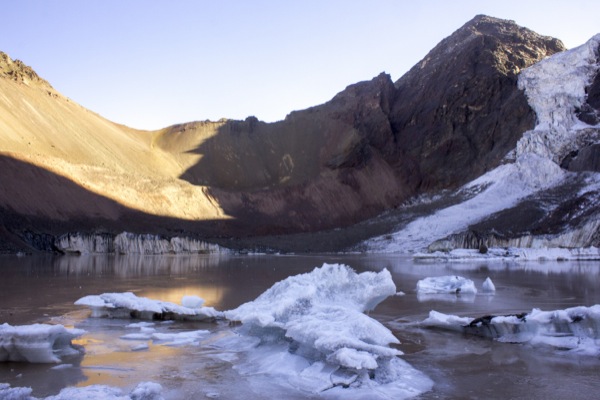
.JPG)



